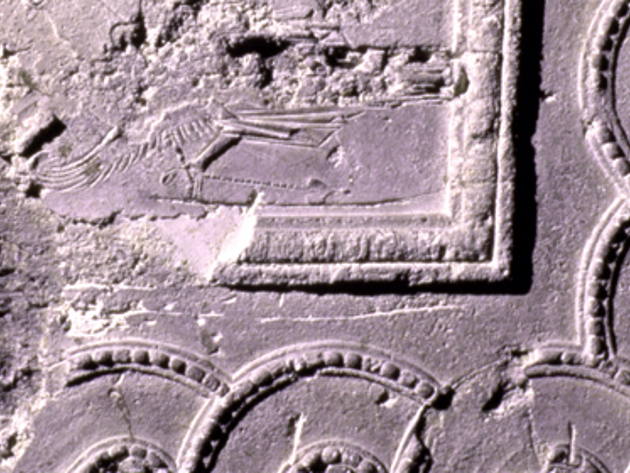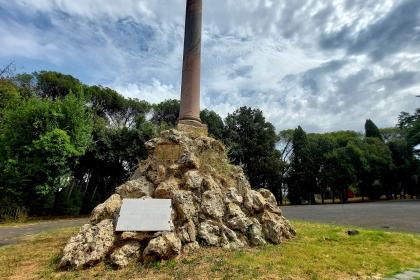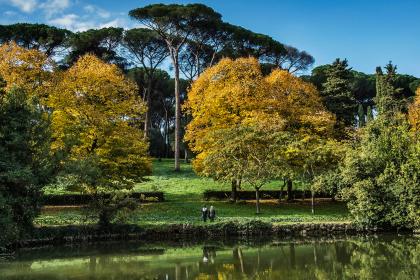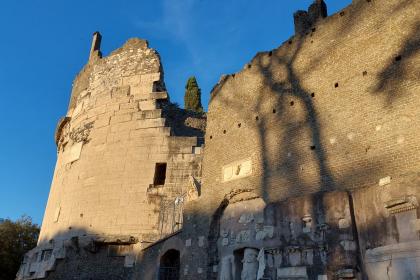
La tumba subterránea, excavada en la toba, se encuentra en la ladera de Villa Glori (Viale Pilsudski), en la ladera norte de los Montes Parioli. Descubierta por casualidad en 1794 por el naturalista danés Abilgaard, se alzaba en un sendero, posteriormente trazado por el vicolo della Rondinella, que, partiendo del eje principal de la via Flaminia, discurría junto a las alturas de la actual Villa Glori y se dirigía hacia el Tíber. La tumba subterránea no estaba destinada a estar aislada, sino a integrarse en un cementerio independiente, dentro del más cercano a la via Flaminia.
La tumba ha sido despojada de su ajuar escultórico y sus decoraciones de estuco y mosaico están gravemente dañadas. Sin embargo, los dibujos del pintor danés J.H. Cabott, realizados poco después de su descubrimiento, llenan parcialmente algunas lagunas importantes. La bóveda, con arco segmentado, estaba cubierta con una decoración de estuco blanco con un patrón geométrico, con los campos separados por un motivo de trenza y llenos de motivos vegetales y figurativos. En el centro de la composición, un campo rectangular representa a los Dioscuros, mientras que alrededor, dentro de seis campos octogonales, encontramos a Baco a lomos de una pantera, un Hércules ebrio sentado sobre un centauro anciano, ménades y faunos con los atributos de las cuatro estaciones. Los campos más pequeños presentan figuras y atributos del repertorio dionisíaco. Las secciones más pequeñas presentan figuras y atributos del repertorio dionisíaco. Ambos techos de los nichos laterales presentaban una partición geométrica con elementos cuadrangulares dispuestos en filas regulares alrededor de una sección central más grande ocupada por una figura alada. La tumba cuenta con nichos funerarios para los cuerpos de los difuntos y nichos para urnas cinerarias. La disposición original del hipogeo data de la época antonina, con un uso prolongado durante los siglos II y III d. C.
Foto: Superintendencia Capitolina
Villa Glori

 Condividi
Condividi
Villa Ada Savoia

 Condividi
Condividi
Mausoleo de Cecilia Metella

 Condividi
Condividi
Informaciones
The monument is not open at the public at the moment.
 Condividi
Condividi
Location
Para conocer todos los servicios de accesibilidad, visite la sección Roma accesible.











































